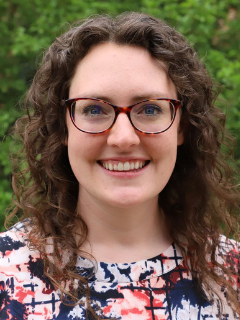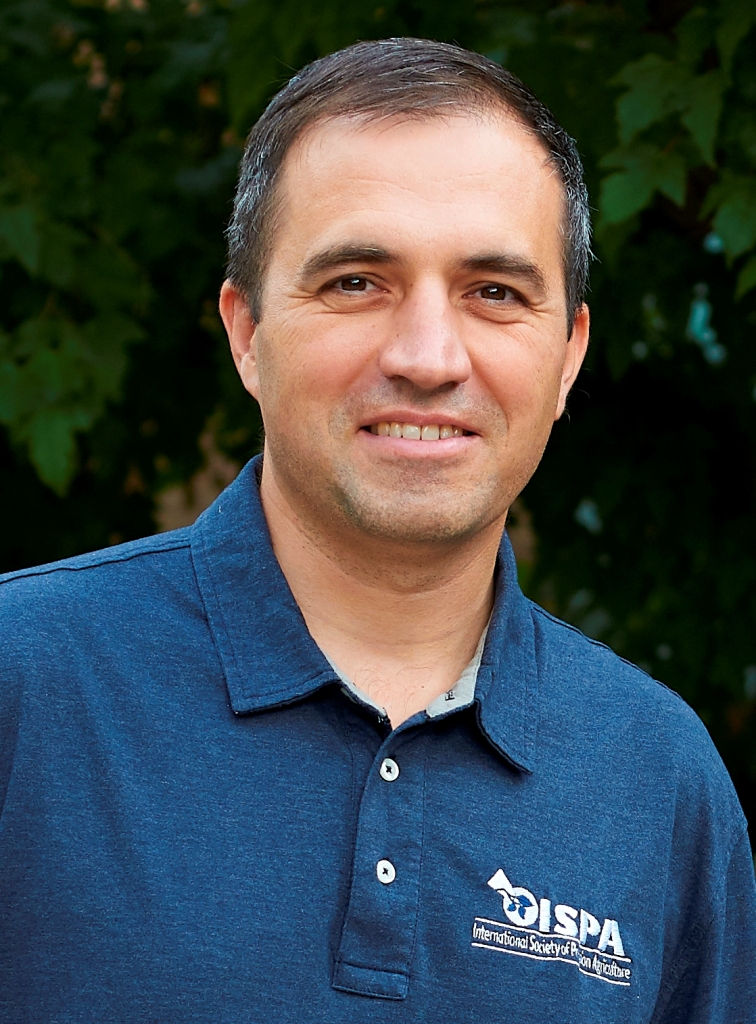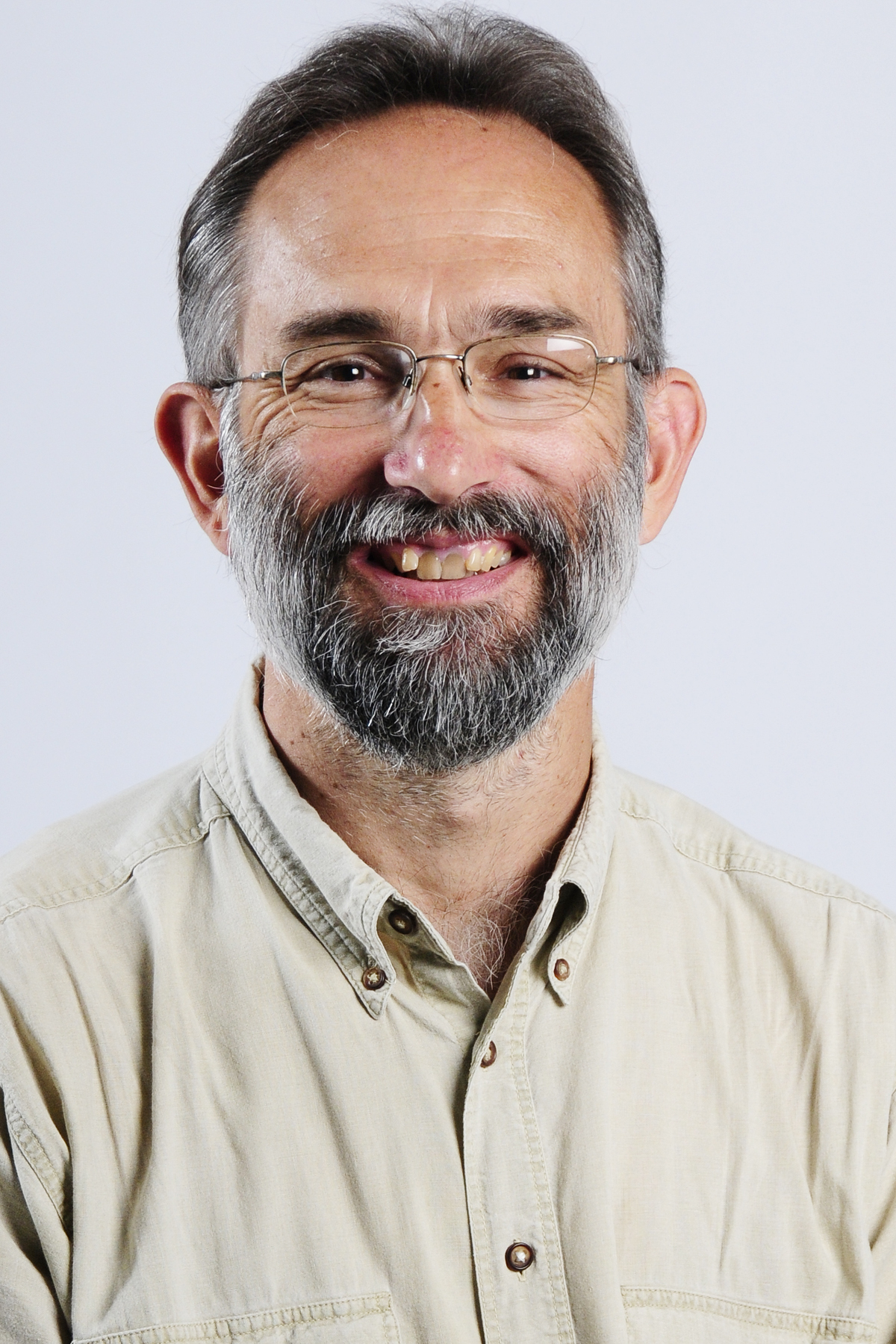
Date: Wed Jun 27, 2018
Time: 8:00 AM - 9:30 AM
Moderator: Yacine Bouroubi
U.S. farmers are challenged to increase crop production while achieving greater resource use efficiency. The Nebraska On-Farm Research Network (NOFRN), enables farmers to answer critical production, profitability, and sustainability questions with their own fields and equipment. The NOFRN is sponsored by the University of Nebraska – Lincoln Extension and derives from two separate on-farm research efforts, the earliest originating in 1990. Over the course of the last 29 years, new agriculture technologies have become more common on farms, providing opportunities to both evaluate the utility of these technologies through on-farm research (such as multi-hybrid planting and crop canopy sensors) and use these technologies to expedite on-farm research implementation and data collection (such as variable rate applications and yield monitors). Additionally, spatially dense data such as yield monitor data, EC data, and aerial imagery are more readily obtained, allowing for new approaches to data analysis and interpretation. Specific skills and additional time are required to fully utilize data from these available technologies; access to individuals and teams with skills in data management systems and spatial data analysis are invaluable, yet many extension educators express low knowledge in using these technologies. Training opportunities are needed to enable educators and researchers to be confident in using these technologies when conducting on-farm research.
As the NOFRN participation and geographic footprint has grown, new tools have been developed and employed to facilitate on-farm research data collection, analysis, and sharing. A variety of mediums including twitter, email newsletters, and YouTube are leveraged to extend opportunities and research findings to a technologically proficient generation of farmers and crop consultants. A smartphone app was developed to aid in plot layout and data recording. Additionally, an interactive archive of study results is available online. To assess long-term impacts of the program, cooperating farmer perceptions, motivations, and behavioral changes resulting from study participation were documented in 2002 and 2016. In 2016, a study of 40 past on farm research participants documented experiences in an on farm research program. The study found that an increase in use of new agriculture technologies has made conducting on-farm research more feasible and less demanding at harvest, reducing the number of participants who thought about quitting participation in on-farm research.


Determination of an optimum fertilizer application rate involves various influential factors, such as past management, soil characteristics, weather, commodity prices, cost of input materials and risk preference. Spatial and temporal variations in these factors constitute sources of uncertainties in selecting the most profitableapplication rate. Therefore, a decision support system (DSS) that could help to minimize production risks in the context of uncertain crop performance is needed. This paper presents a newly developed framework for a dynamic DSS, called NumericAg, which seeks to estimate the probability of achieving expected profits under specific growing conditions. The proposed system includes a database, a user interface, and a numeric engine for computation of profit space. The online web interface (www.numericag.com) allows a user to specify production conditions (e.g., previous crop, tillage system, soil type, organic matter content, rainfall, and crop heat unit), and to accept or modify the price of grains and fertilizers. The database stores the results of previously recorded fertility trials. The profit space computation engine was designed to estimate the probability of achieving different levels of net return over the cost of nitrogen fertilizer for every potential application rate. The profit space engine considers over 20,000 potential quadratic-plateau fertilizer response functions in combination with 49 cost scenarios evaluated against every fertility trial weighted according to the growing conditions specified by the user. Consequently, probability of different levels of potential net return over cost of fertilizer was estimated using fertilizer response observations that relatively closely match the growing conditions specified by the user. A sensitivity analysis was used to show DSS response to changes in specified growing conditions. Thus, when comparing different growing conditions, a smaller probability of achieving relatively high profits was found with sandy soils, relatively low crop heat units and water availability, or low levels of nitrogen contribution from previous crops. Although the rate that maximized the expected net return over cost of nitrogen did not change substantially, the rate of profit decline due to under application of nitrogen fertilizer was different for different growing conditions.

Nitrogen (N) fertilizer recommendations that match corn (Zea mays L.) N needs maximize grower profits and minimize water quality consequences. However, spatial and temporal variability makes determining future N requirements difficult. Studies have shown no single soil or weather measurement is consistently increases accuracy, especially when applied over a regional scale, in predicting economically optimal N rate (EONR). Basing site N response on soil hydrological group could help account for soil and weather variability and better match in-season corn N fertilization need. Research was conducted across eight Midwestern states totaling 49 different site locations. Sites were delineated into five groups based on USDA-NRCS hydrologic designation and drainage class. Each group was regressed against measured soil and weather variables. Measured soil variables were analyzed by 0 to 0.30 and 0 to 0.60 m depths and included clay content, organic matter, plant available water, and total organic carbon. Measured weather variables, from the time of planting to the time of in-season canopy sensing, included site growing degree days, total precipitation, evenness of rainfall (using the Shannon Diversity Index), and the abundant and well-distributed rainfall. The resulting most significant soil and weather variables for improving EONR estimation were selected to develop an N fertilizer recommendation model for each of the five groups. Model R2 values ranged from 0.48 to 0.85 while root-mean-square errors ranged from 16 to 43 kg N ha-1. When compared to EONR, and considering all five models, 79% of the sites fell within 34 kg N ha-1 of EONR with an R2 of 0.72 and a root-mean-square-error of 34.5 kg N ha-1. Overall, these results suggest that soil hydrological groups can assist in determining which soil and weather interaction will most affect site-specific EONR.


Improving corn (Zea maysL,) nitrogen (N) fertilizer rate recommendation tools can improve farmer’s profits and help mitigate N pollution. One way to improve N recommendation methods is to not rely on a single tool, but to employ two or more tools. Thiscould be thoughtof as “tool fusion”.The objective of this analysis was to improve N management by combining N recommendation tools used for guiding rates for an in-seasonN application. This evaluation was conductedon 49 N response trials that spanned eight states and three growing seasons. An economical optimal N rate (EONR) was calculatedfor N treatments receiving 45 kg N ha-1applied at-planting and the remaining fertilizer N applied at the V9 corn developmental stage. A yieldgoal approach, the Iowa Late-Spring Nitrate Test (IA LSNT) , and canopy reflectance sensing were the three recommendation toolsused to evaluate the tool fusion concept. Tools were fused using either an elastic net or decision tree approach. Using the elastic net approachtools, were fusedwith all combinations of mainand two- or three-way interaction terms regressed against EONR. The decision tree was developed using only the maineffects compared against EONR. Regardless of the method used to combine tools, any combination of two or three N recommendation tools together improved performance compared to using any one tool alone. The best elastic net based tool fusion occurred when all three recommendation tools and all possible interactions were includedin the model which helped explain 42% of the variation around EONR, a 75% increase over the best tool alone. Additionally, the root-mean-squareerror (RMSE) improved from 68 kg N ha-1(besttool used alone) to 55 kg N ha-1. However, the best combination occurred when using the three N recommendation tools in a decision tree. The decision tree method explained 45% of the variation in EONR and had a RMSEvalue equal to 53 kg N ha-1. This analysisdemonstrated that combining tools is a valid way to improve N recommendations,and thus could aid farmers in better managing N than using a single tool by itself.

Static (i.e. texture and soil depth) and dynamic (i.e. soil water, temperature) factors play a role in determining field or subfield economically optimal N rates (EONR). We used 50 nitrogen (N) trials from Argentina at contrasting landscape positions and soil types, various soil-crop measurements from 2012 to 2017, and statistical techniques to address the following objectives: a) characterize corn yield and EONR variability across a multi-landscape-year study in central west Buenos Aires, Argentina, b) quantify the relative importance of the dynamic versus static factors, and c) develop predictive models to assist site-specific N management in that region. Results indicated that EONR in this region varies with a coefficient of variation of 67% (range: 0 to 260 kg N ha-1). Yield levels varied less than the EONR with a coefficient of variation of 27% (range: 3.8 to 17 Mg ha-1). Dynamic factors explained about 47% of the spatial and temporal variability in the EONR and static variables explained 20% of the observed variation. Multi-regression analysis considering both static and dynamic factors captured between 60 and 71% of variability in EONR and corn yield. Model performance was better for yield (MAE, mean absolute error, ~1 Mg ha-1) than for EONR (MAE of 39 kg N ha-1). The number of rain events greater than 20 mm accumulated from planting to flowering and from planting to harvest and the amount of residue were the most important predictors of the variability (among ~ 60 variables explored). This analysis advances our understanding on the critical factors influencing EONR and yield to support development of decision N management tools to aid precision agriculture goals and strength current N guidelines.
The trends and reactions of the general public towards global events can be analyzed using data from social platforms, including Twitter. The number of tweets has been reported to help detect variations in communication traffic within subsets like countries, age groups and industries. Similarly, publicly accessible data and (in particular) data from social media about agricultural issues provide a great opportunity for obtaining instantaneous snapshots of farmers’ opinions and a method to track changes in opinion through temporal analysis. In this paper we hypothesize that the presence of keywords like precision agriculture, digital agriculture, Internet of Things (IoT), BigData, remote sensing, GPS, etc., in tweets could serve as an indicator of discussions centered around interest in modern farming practices. We extracted relevant tweets using keywords such as IoT, BigData and Geographical Information System(GIS), and then analyzed their geographical origin and frequency of their mention. We analyzed the Twitter data for the period of 1st-11thJanuary, 2018 to understand these trends and the factors affecting them. These factors, such as special events, projects, biogeography, etc., were further analyzed using tweet sources and trending hashtags from the database. The regions with the highest interest in the keywords were United States, Egypt, Brazil, Japan and China. A comparison of frequency of keywords revealed IoT as the most tweeted word (77.6%) in the downloaded data. The most used language was English followed by Spanish, Japanese and French. Periodical tweets on #IoT from an account handled by IoT project on Twitter and Seminars on IoT in January in Santa Catarina(Brazil) were found to be the underlying factors for the observed trends.

